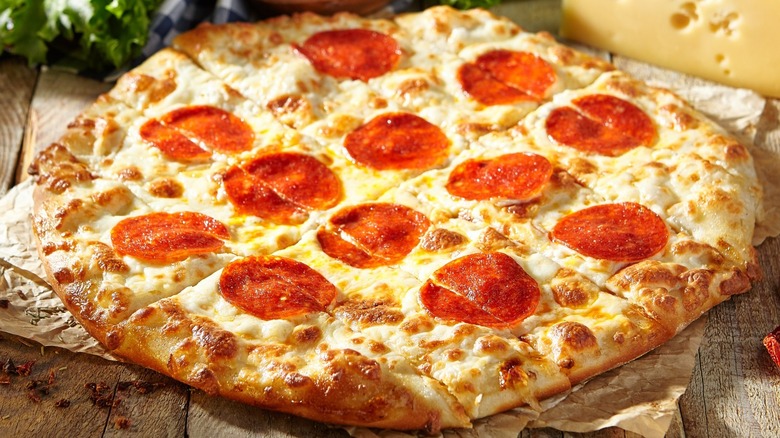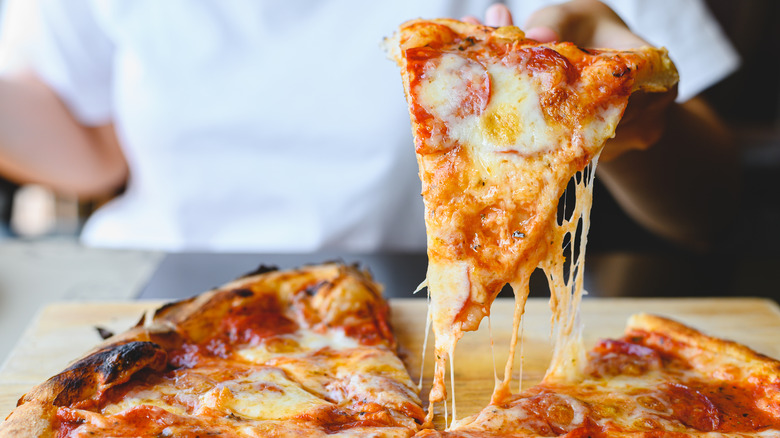Why Carbonated Pizza Crust May Be The Wave Of The Future
While the only time that carbonation may come to mind when thinking about pizza is in regards to sipping a seltzer alongside dinner, the future of pizza may actually be carbonation-focused. The beloved food is a staple that is relied on for sustenance, flavor, and familiarity. A hard-to-forget comfort food, the dish is a cultural and gastronomical favorite and people eat pizza around the world. The popular food item may be receiving a high-tech, advanced upgrade that will use a process similar to carbonation instead of relying on yeast to rise the dough.
SYFY Wire reports on the science behind this idea, speaking with a researcher at the University of Naples Federico "Foam Lab," Ernesto Di Maio, who has experience working with developing "synthesizing polyurethane polymers using pressure" and wanted to apply that to pizza making. Di Maio and his team experimented with crusts and doughs, replacing the staple leavening agent yeast with newly developed advancements. The official report published in Physics of Fluids states, "The novel process relies on the use of a gaseous blowing agent and a pressure program to form and stabilize bubbles during baking, avoiding the use of yeast and the associated lengthy leavening stage."
How does the carbonation process work?
SYFY Wire notes that yeast "feeds on sugars in the dough and produces carbon dioxide which infuses the mixture with gases, causing it to rise." In conversation with SYFY, Ernesto De Maio states that there are drawbacks to the agent including allergies and timeliness — yeast takes quite a long time to work its magic and cause an adequate amount of rising or leavening.
The experimental pizza dough started as usual — flour, water, and salt — before being "placed ... into an autoclave which acts as a pressurized oven." From there, the process resembles the carbonation process that soda or seltzer often undertakes, in which pressure is added in order to "infuse gases." Interesting enough, this is also a huge time saver: Baking and leavening occurring all at once. DiMaio told SYFY Wire, "The dough cooks slowly enough that you have time to release the pressure in a controlled way so as to gently inflate the dough to the desired extent." The original tests produced smaller pizza crusts, but they were in line with traditional pizza in "density and morphology." Another round of slightly larger pizzas also produced a satisfactory result, but the team is now planning on working on acquiring a larger pressurized oven in order to make a pizza the size of a typical pie.
Whether made with yeast or by carbonation, pizza will most likely remain a cultural and culinary stalwart for a long, long time.

